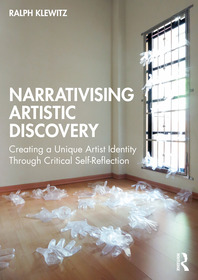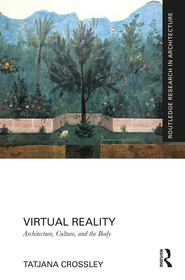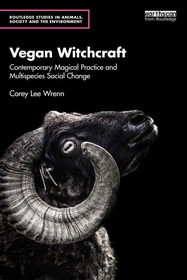
Narrativising Artistic Discovery
Creating a Unique Artist Identity Through Critical Self-Reflection
-
20% KEDVEZMÉNY?
- A kedvezmény csak az 'Értesítés a kedvenc témákról' hírlevelünk címzettjeinek rendeléseire érvényes.
- Kiadói listaár GBP 39.99
-
19 105 Ft (18 195 Ft + 5% áfa)
Az ár azért becsült, mert a rendelés pillanatában nem lehet pontosan tudni, hogy a beérkezéskor milyen lesz a forint árfolyama az adott termék eredeti devizájához képest. Ha a forint romlana, kissé többet, ha javulna, kissé kevesebbet kell majd fizetnie.
- Kedvezmény(ek) 20% (cc. 3 821 Ft off)
- Kedvezményes ár 15 284 Ft (14 556 Ft + 5% áfa)
Iratkozzon fel most és részesüljön kedvezőbb árainkból!
Feliratkozom
19 105 Ft

Beszerezhetőség
Még nem jelent meg, de rendelhető. A megjelenéstől számított néhány héten belül megérkezik.
Why don't you give exact delivery time?
A beszerzés időigényét az eddigi tapasztalatokra alapozva adjuk meg. Azért becsült, mert a terméket külföldről hozzuk be, így a kiadó kiszolgálásának pillanatnyi gyorsaságától is függ. A megadottnál gyorsabb és lassabb szállítás is elképzelhető, de mindent megteszünk, hogy Ön a lehető leghamarabb jusson hozzá a termékhez.
A termék adatai:
- Kiadás sorszáma 1
- Kiadó Routledge
- Megjelenés dátuma 2025. december 29.
- ISBN 9781032689302
- Kötéstípus Puhakötés
- Terjedelem214 oldal
- Méret 246x174 mm
- Nyelv angol
- Illusztrációk 63 Illustrations, color; 63 Halftones, color 700
Kategóriák
Rövid leírás:
This book explores how artistic identity evolves through creative practice, self-reflection, and philosophical inquiry, using the experience of artist Ralph Klewitz as a case study.
Több
Hosszú leírás:
This book explores how artistic identity evolves through creative practice, self-reflection, and philosophical inquiry, using the experience of artist Ralph Klewitz as a case study.
Klewitz’s research evolves through active questioning, reinterpretation, and self-discovery, demonstrating how these dynamics continuously reshape his artistic identity. His introspection serves as a model for artists, showing how self-reflection can foster growth and identity formation. Using the Socratic method, Klewitz engages in a continual process of inquiry that informs his research. Reflecting on both his artistic process and the interpretation of his art, he integrates philosophical perspectives from thinkers like Bergson, Derrida, and Barthes, examining how personal experience intersects with philosophical thought. His journey illustrates that artistic identity is fluid, shaped over time through critical inquiry. Klewitz examines how gaining a deeper understanding of one’s work enables artists to communicate more clearly, thereby enhancing audience engagement and actively contributing to the discourse surrounding their art.
Artists, art educators, researchers in creative practice, philosophy, and social sciences, as well as students exploring artistic development, will find this book essential. It also offers key insights for the wider art world community and individuals in the creative industries, particularly those interested in the intersection of art, identity, and social engagement.
TöbbTartalomjegyzék:
Acknowledgment
Preface
Framework
Overview
Artist Identity Construction
Autoethnography
Narrative Inquiry
Socratic Method
Context
Section 1: Creation
Section 1 Abstract
Bergson’s Philosophy and Translating My Artistic Process into Language
Term Definitions’ Impact on Artistic Practice: Reflections and Insights
Self-reflective narratives on Bergson’s “Introduction to Metaphysics”
Enhancing my insights by reflecting on Bergson’s “Creative Evolution“
Navigating Bergson’s Concept of Becoming in My Creative Process
Bergson’s Notion of Knowledge and Artistic Creation
Reflecting on Bergson’s Concept of ‘Nothing’
Bergson’s ‘Flowing of Forms’ as a Holistic Concept
Order and Disorder in Artistic Creation
Exploring the Dual Paths of the Mind
Section 1: Key Insights
Why Do I Create Art?
How Do I Produce Art?
What Roles Do Intuition and Reasoning Play in My Art?
When Do I Complete an Artwork?
Section 2: Interpretation
Section 2 Abstract
Unveiling Art, Navigating Insights, Shaping the Research Roadmap
Retrospective Insights into Artistic Evolution and Precarious Logic
Videoart Documentation Structure
Reflections on Utilising the First-Person Voice
Reflections on Utilising the Third-Person Voice
Exploring Artistic Authorship from Alternative Perspectives
Unpacking Barthes’ Authorship Exploration
Phase 1: Engaging with Barthes’ Premise
Phase 2: Rethinking Authorship
The Who-Question
The Where-Question
The When-Question
Navigating Artistic Voice Through Writing Approaches
Exploring the Impact of Technical Skills on Artistic Practice
Artistic Dimensions Unveiled Through Skill, Knowledge, and Inspiration
Artistic Motivation and Evolution
Materiality, Chronology, and Perceiving Artwork with Background Information
Artistic Temporality and Enduring Resonance
Temporal Significance in Klein’s and Rosenkranz’s Artistic Discourse
The Artist’s Engagement with Creation
Linguistic Artifacts Accompanying My Artwork
Choosing Between Spoken and Written Language, English and German
Navigating Beyond Logic in Artistic Reflection
Contextualising Surrealist Concepts in My Artistic Development
Reflections on the Manifesto
Reflections on the Artist’s Statement
Exploring Stream-of-Consciousness Writing
Navigating the Interplay of Causality and Ambiguity in Art and Academia
Exploring Philosophical Depths and Personal Opinions in Art Criticism
Navigating the Tension Between Structure and Intuition in Artistic Reflection
Exploring Free Associations in Artistic Reflections
Artistic Reflections and Interpretive Freedom
Navigating Personal Reflections and Interpretations in Artistic Discourse
Inner and Outer Realms in Stream-of-Consciousness Reflections
Reflecting on Form and Interpretation in Art
Interpreting Form and Reality Through Stream-of-Consciousness Writing
Navigating Factual and Imagined Realities Through Stream-of-Consciousness Writing
Artistic Evolution Through Creative Reflection
Discovery and Collaboration in Language Translation
Text Disassembly, Reassembly, and Insights
Exploring the Interplay Between Text and Image in Artist Books
Exploring the Interplay of Text, Image, and Chance
Innovative Design Processes in Artist Books
Schön’s Theories in Constructing Reflective Book Designs
Post-Rationalising Inspirations for My Book Design
Interpreting the Interplay of Language, Imagery, and Liminal Spaces
Expanding Intertextuality in My Artist Book
Comparative Analysis in Art Interpretation
Expanding Art Interpretation Through Methodological Inclusivity
Complexities in Research Data Collection and Interpretation
Navigating Complexity in Artistic Interpretation
Participant Distinctions, Dissensions, and Autonomy in Interpretation
Understanding Key Characteristics and Their Alignment with My Research
Incommensurability Amongst the Interpretations
Concluding Reflections and Synthesising Insights for Further Inquiry
Section 2: Key Insights
Reconceptualising Authorship Through a Dialogue Between Artist, Perceiver, and Artwork
Interpreting Art Through Inquiry and Expression
Artistic Jolts and Ruptures in My Artist Books
Intertextual Exploration of My Artist Books
Participant Responses and Artistic Reflections
Exploring Insights and Dialogues in Art Interpretation
Navigating Psychological and Philosophical Insights in Artist Identity Formation
Transformation
Embracing Dynamic Meaning in Artistic Research
Navigating Artistic Identity Formation
Articulating Practice to Engage Audiences
Speculation
Human-AI Collaboration
AI as an Autonomous Creative Entity
Reflecting on the Scenarios and Recommendations
Bibliography
Filmography
Index
Több








